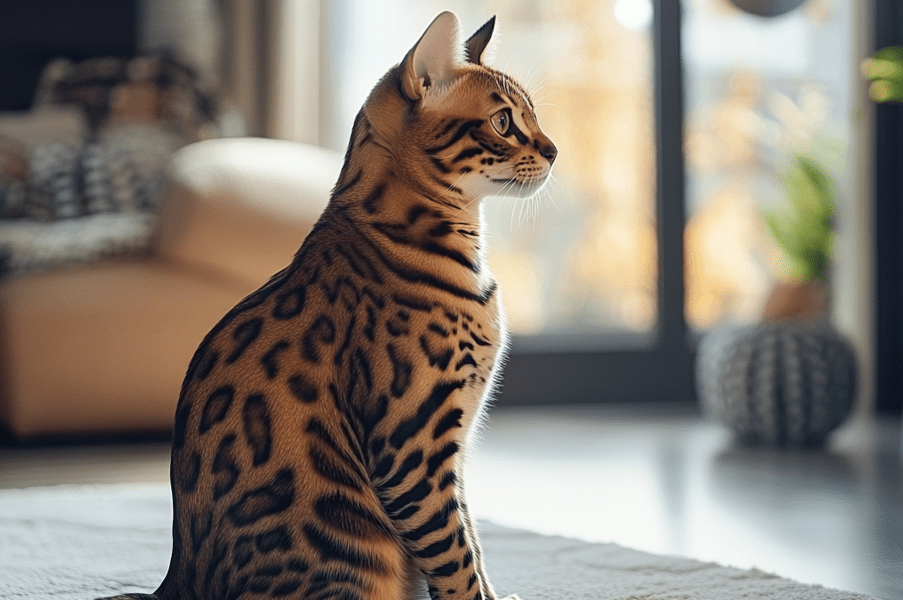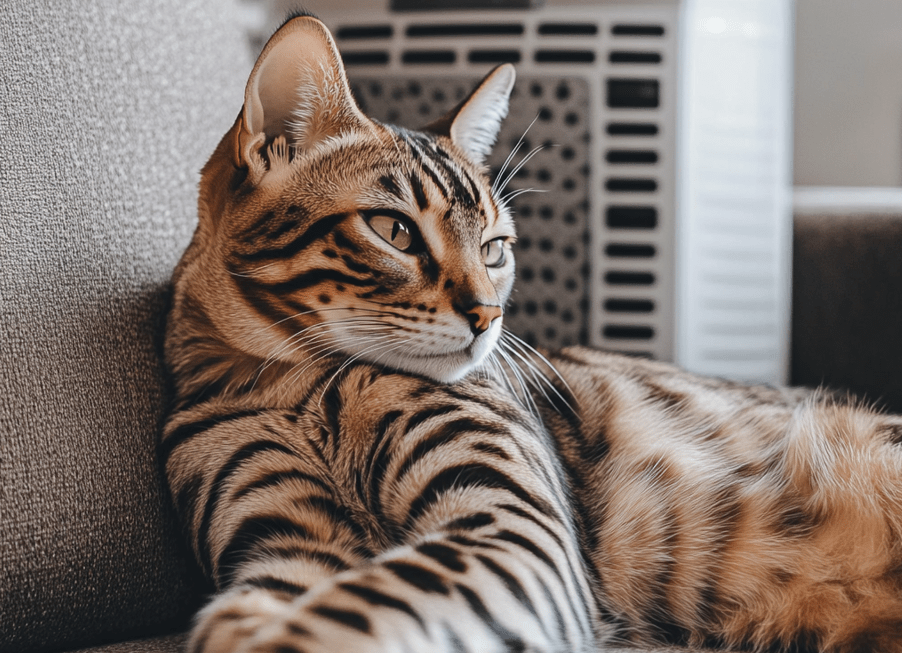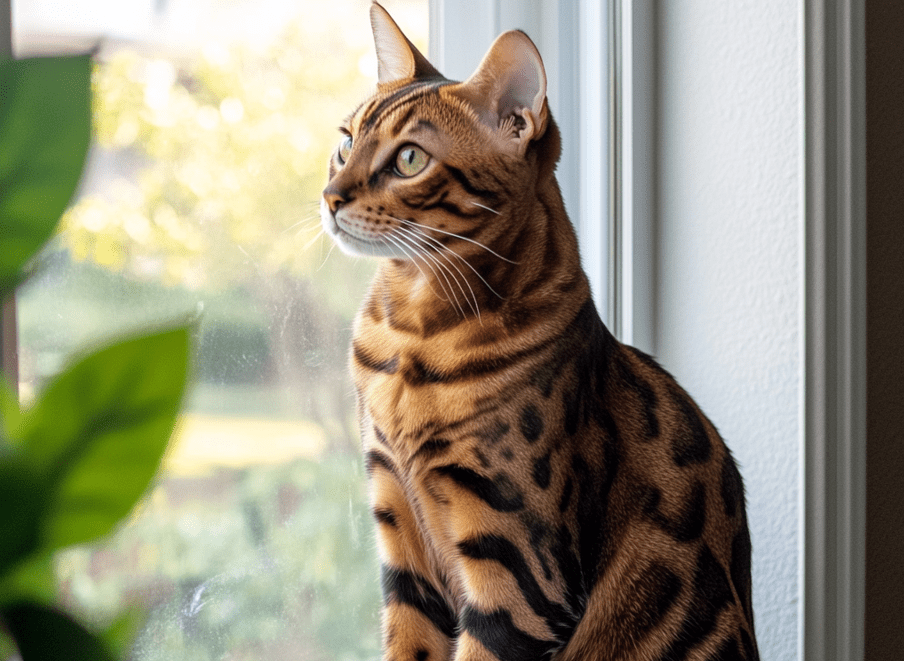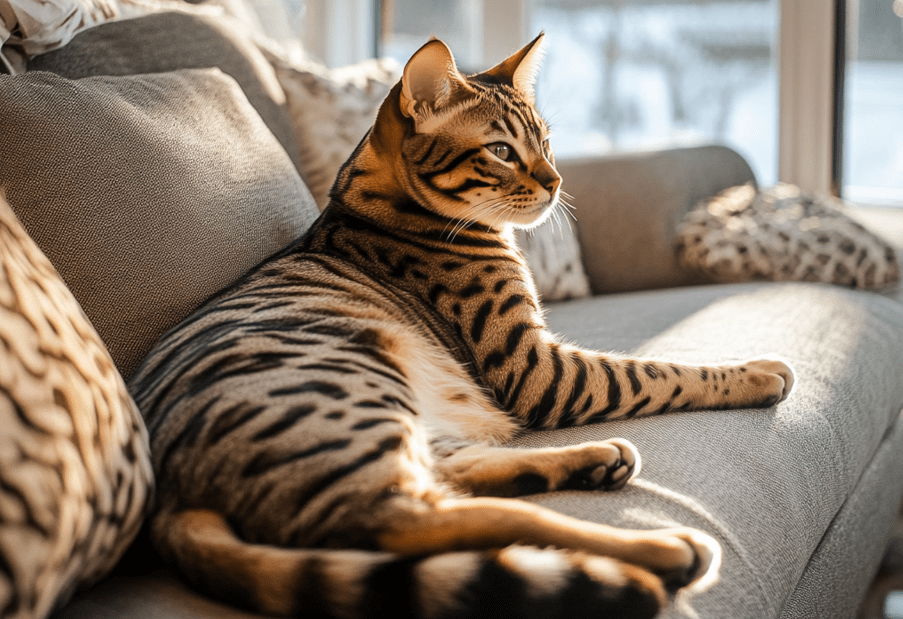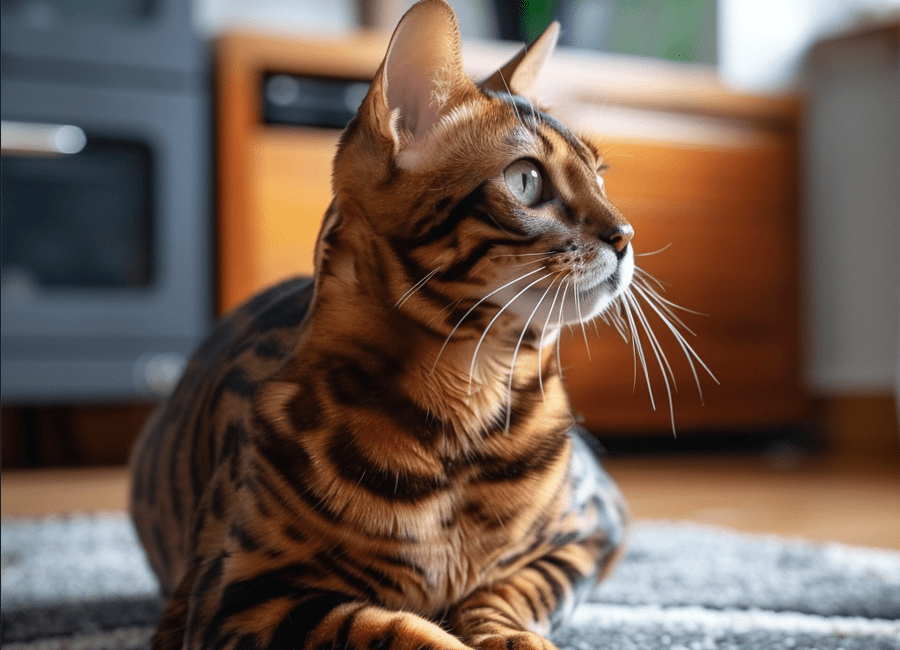
All Bengal cat owners are familiar with their intelligent nature combined with their energetic personality and love for play. If you’re a proud owner of a Bengal cat, you’re likely aware of their intelligence, energy, and playful nature. While these traits make them wonderful companions, they also mean that Bengal cat training is essential. Bengals demonstrate their inquisitive behavior while showing their desire to learn so they can master many tricks and understand both commands and leash-walking. The training process requires knowing their distinct character attributes as well as using suitable instructional methods.
In this article, we will be discussing veterinary-approved approaches that will help you achieve proper training results for your Bengal cat. We will elucidate all the necessary materials and emphasize the vital role of positive reinforcement in conjunction with clicker training. to unlock their full potentials helps you control naughty behaviors while building stronger bonds with your cat and releases their complete abilities. We are starting the training process to make your Bengal become a model family pet.
1.The intelligence and trainability of Bengal cats
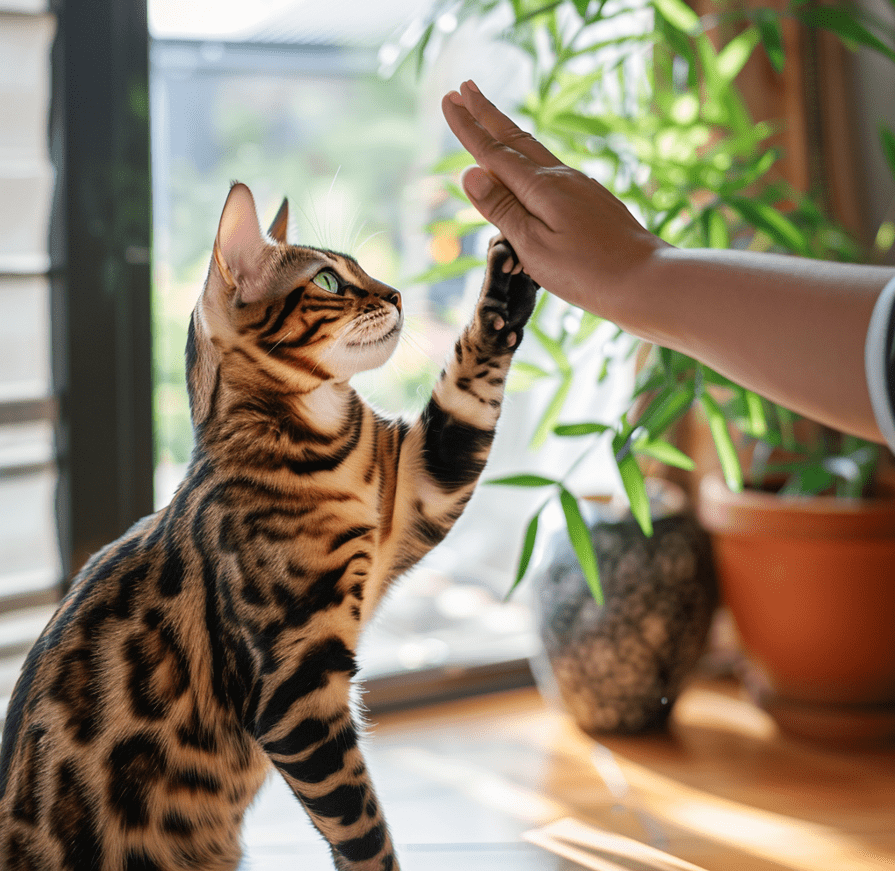
Intelligence stands as a trademark feature of Bengals among all cat breeds. The comparison between Bengals and dogs happens often because these cats show just as much desire to perform tricks and show affection toward their human owners. The Bengal cat breed shows excellent learning capability for various tricks in addition to securing a position as the fastest learner among feline breeds. Because Bengals exhibit high levels of energy and mischief, training them provides an excellent outlet to channel misbehaviors.
They mistake their playful and mischievous character for being untrainable, but their impressive intelligence makes training this breed a success.
Are Bengals Easy to Train? Yep! Depending on their level of stubbornness, your training time will differ, but proper instruction will help you train any cat. The Bengal cat belongs to the same category as other domesticated animals.
2.Essential Supplies for Bengal Cat Training
The start of training your Bengal requires purchasing necessary supplies that will support your training process.
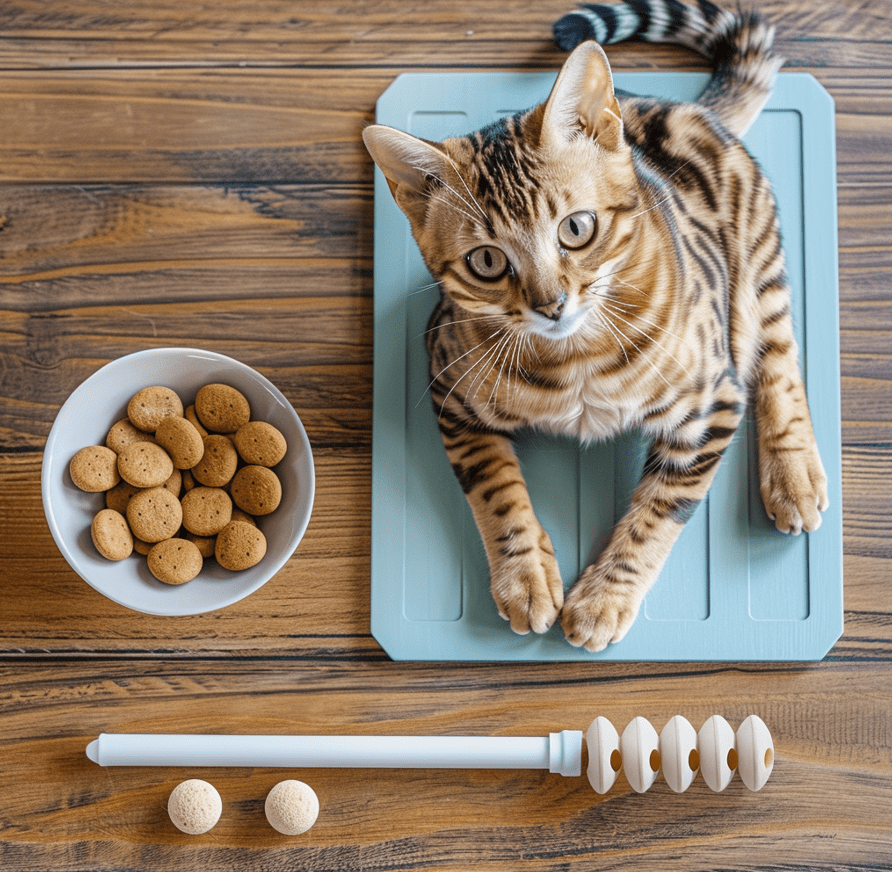
Treating your Bengal as their primary reward motivates them to follow your commands effectively during the training period. Your Bengal cat will be more inclined to follow your instructions when you give them a delectable food reward. When searching for suitable rewards for finicky felines, check our list of recommended special cat rewards.
For training Bengal cats, a clicker stands as a recommended accessory. A clicker streamlines the process even though it doesn’t offer crucial assistance for training sessions.
Target sticks should become your training companion when using a clicker. A target stick generally has an extendable design with a tiny spherical accessory attached to the tip. With target sticks, trainers guide their pets in target areas without having to engage physical touch. The device functions as an image marker, which helps your Bengal travel between areas. The target stick assists owners when they need to guide their cat into their backpack or carrier for carrier training and agility tasks. This dual-target stick, accompanied by a clicker device, stands out as a top option.
3.Positive Reinforcement: The Key to Success
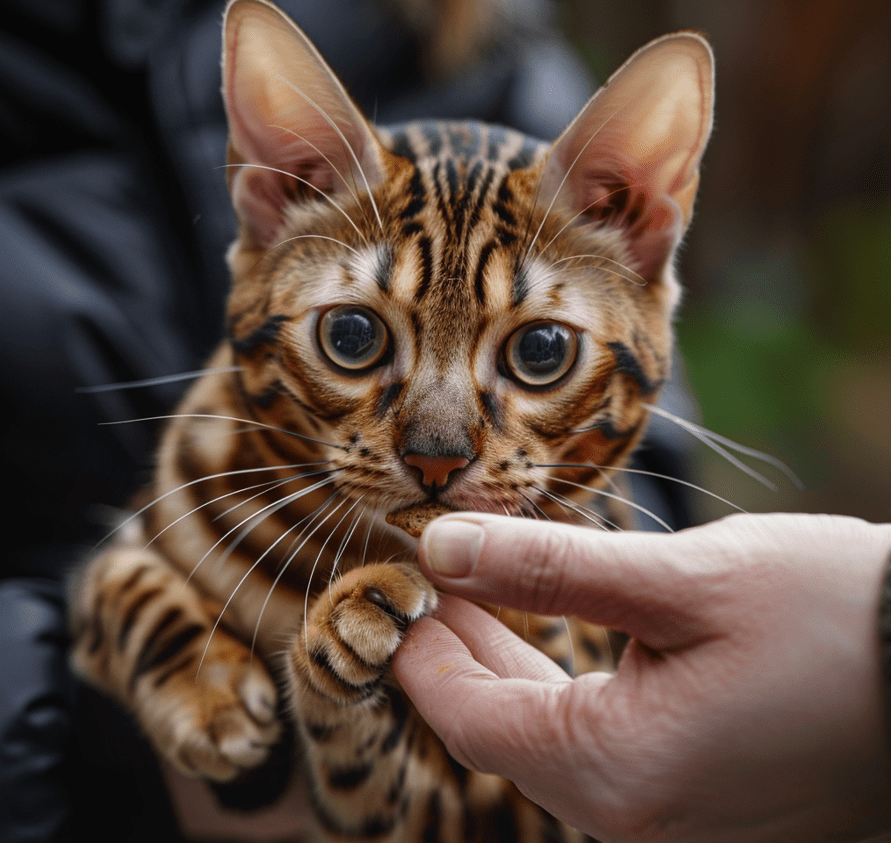
Providing positive reinforcement by praising your Bengal with treats becomes more effective than force as a response to successful training sessions. Treat your Bengal moments after completing a successful command and action correctly. The keyword here is immediately. Your Bengal cat needs you to deliver the reward without any delay between the completion of the action because delayed timing breaks the link between positive behavior and the treat.
Offer your Bengal cat either a treat or lots of love or their preferred reward whenever they perform the desired action. The immediate reward needs to follow each desired behavior in order for your pet to understand the cause-and-effect relationship between actions and rewards. Positive reinforcement through treats serves as ideal praise since cats respond strongly to food-related rewards. During multi-command training, always keep your pet aware of which order the treats will be given by (keep a few seconds in between commands to make the instructions clear).
4.Getting and Keeping Your Bengal’s Attention
High energy levels mark most Bengals, while trying to gain their focus requires extra effort. Food functions as an effective way to engage your Bengal since cats respond well to their instincts. Please name your Bengal and offer a treat to capture their interest.
Cats operate independently, so they will usually show only brief responses to your presence during times of their choosing. You must first engage your cat to initiate training because their attention is difficult to capture. Pet owners can command their pets’ attention through name-calling and treat offerings. After they arrive from the investigation, provide the treat as an incentive to commence the session. Your cat will discover the value of its name call, which will lead you toward not needing to reward it for responses. The training process has now successfully created a new behavior in your pet. The training technique functions equally well for multiple purposes, including teaching kittens to use the litter.
5.Clicker Training and Target Stick Training for Bengals
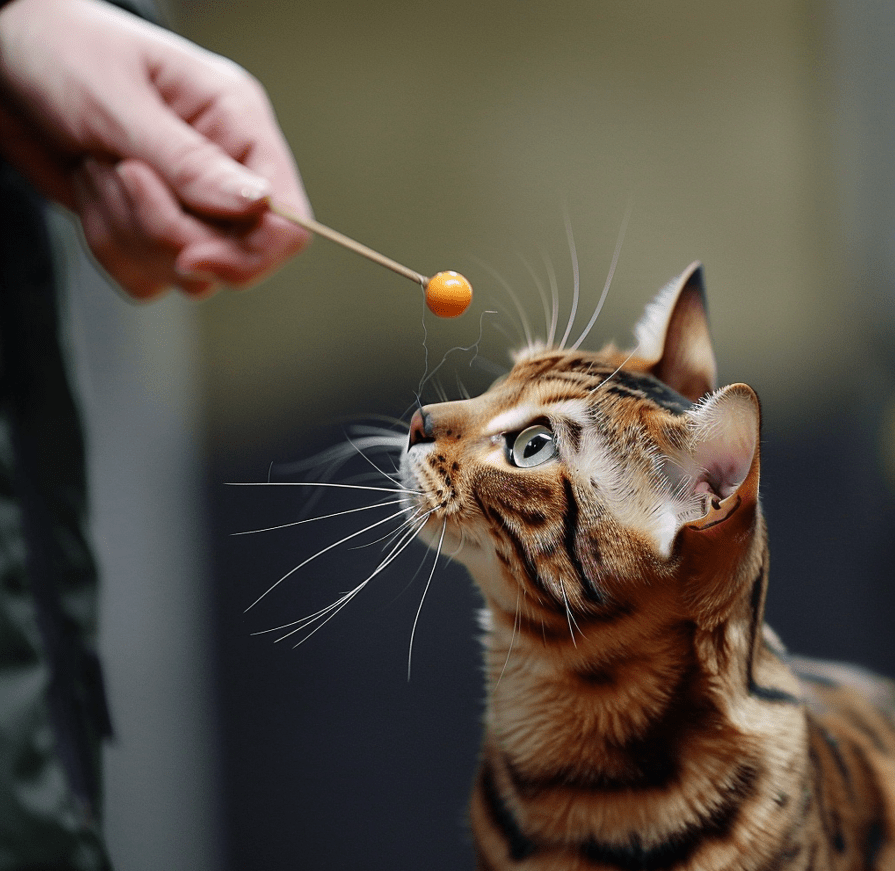
Use Clicker Training
A clicker presents an ideal introduction to teaching cats fundamental training concepts. After teaching your Bengal about clicker operations, training will become more effortless.
The first training objective should be to establish the clicker-reward connection with your cat after starting clicker use. Please proceed to a quiet room near your Bengal and activate the clicker. You should always provide a treat to your pet right after every clicker sound. After conducting this exercise 10 times during multiple sessions, your Bengal will learn that the clicker produces food rewards.
Once your Bengal kitten understands that the clicker creates opportunities for treats, they will be ready for basic training.
The timing of food rewards plays a critical role in the successful clicker training of your pet. You should deliver a treat following your Bengal’s successful performance of the target behavior and after making the click noise. The objective during training is to teach pets that particular behaviors that they perform will result in receiving treats.
Once your Bengal has mastered clicker training, you can begin using your target stick.
Tune your target stick with smelly food, such as tuna or cat wet food, before the training session starts. Open the stick to your Bengal when the scent of food reaches their nose and click the clicker. The sound indicates to your Bengal that they will receive a reward. Repeat this several times. Always wash the target stick properly before usage. Start this phase shortly after beginning target stick training because it assists your Bengal with understanding your requirements regarding the odd-looking tool during its first couple of training sessions. Your Bengal must consistently touch the target with their nose as the treatment approaches their facial area before proceeding to the following stage.
You should place the target stick at a further distance to make your cat walk towards it for a touch. Press the clicker while the treat remains accessible for your Bengal to receive.
After training, your cat will associate treats with rewards, so you can remove them from the stick. Your Bengal will understand the connection between following the stick and receiving treats. Use the clicker and give your cat a treat after each movement of the stick that leads to their following action.
You should use the stick to guide your Bengal across furniture until they need to jump to reach the stick. At this stage of training, it’s crucial to provide a clicker sound and treat whenever your cat touches the stick, thereby establishing a strong reinforcement history between the target and your Bengals. You will eventually decrease food rewards for following the target, but you should currently focus on reinforcing the behavior through rewards.
6.The Importance of Using the Right Treats

Requirements for effective motivation during Bengal training sessions include choosing appropriate rewards. Your Bengal may develop nutritional issues when receiving low-quality, high-calorie treats because artificial preservatives and flavoring agents appear in the ingredients.
Your search should focus on finding protein-rich treats containing no unnecessary caloric elements since these empty calories provide no value to your Bengal. The first ingredient on the nutritional label must be protein.
Plain boiled chicken breast shredded into small pieces makes an excellent and nutritious “natural” treat for your Bengal. You should focus on maintaining freshness with your rewards. Each session brings only enough to satisfy your needs until it ends. Afterward, place the remaining treats in the refrigerator for a maximum of 4 days before use.
You must restrict the total reinforcing food contents to less than 10% when comparing your Bengal’s daily calorie requirements. Please make the most of your reinforcement opportunities.
7.Patience and Realistic Expectations in Bengal Cat Training
The training of Bengals and other cats requires brief sessions since they have quick attention spans. Make sure your training sessions match the pets’ brief focus duration by being practical about time lengths. Cut the training short since cats become uninterested quickly while concentrating on providing one lesson per session.
Evidence contradicts the popular belief that cats are untrainable. Despite having a similar mental capacity as dogs, and sometimes even outsmarting them, cats can be trained just like canines. Because cats are less willing to please humans than dogs, the process might prove slightly more challenging for training purposes. Training a cat requires patience and time investment, but having both together with this advice makes it possible to train one.
Teach your Bengal cat only one ability at a time. Your Bengal cat needs multiple training habits taught to it, such as counter restriction and street walking. You should teach your Bengal one training activity at a time because doing so simplifies the process for you both. Training your pet to stay off counters will require some patience since cats naturally want to climb on high surfaces, and you must confirm it masters this skill before continuing to new training sessions.
Conclusion
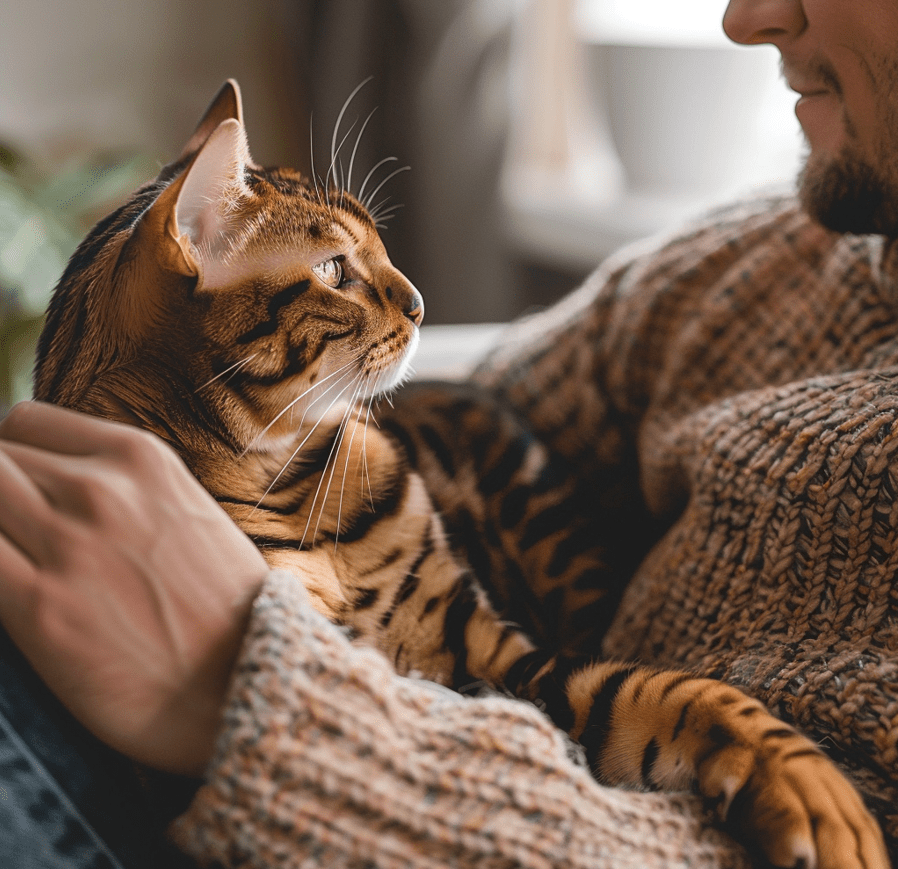
The proper techniques, combined with knowledge of Bengal cat behaviors, allow you to train Bengal successfully. The combination of positive reinforcement principles with clickers, target sticks, and selected rewards will help you develop your behavior and learn new commands and tricks for your Bengal cat.
We should maintain consistent training sessions and patience for a short duration, as they require focused attention to stay motivated. Punishing your Bengal leads to stress and produces negative conduct. Through commitment alongside suitable training methods, you enable your energetic, intelligent Bengal to transform into a well-mannered companion who brings you lasting joy through a profound bond of friendship. Check with your veterinarian to determine if you provide training sessions that meet their needs while being both educational and secure.

